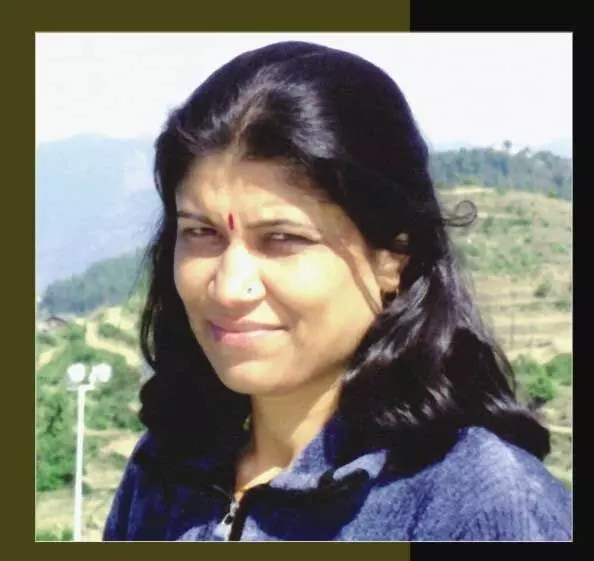There are many mysteries associated with the history of the idols of Ramlala to be installed in the grand Ram temple in Ayodhya. From the era of Maharaja Vikramaditya of Ujjain to the Mughal period and then till the modern times, as the demolition and construction of Ram’s birthplace in Ayodhya continued, the form and history of the idols of Ramlala also kept changing. You will be surprised to know that this time after 500 years, the new statue in Ayodhya is the fourth statue of Ramlala which has been installed in Ayodhya.
This is the first Holi of Ramlala after being seated in his temple in Ayodhya. In such a situation, special gulal has been prepared for them. This Gulal is being prepared from Tesu and Kachnar flowers. This is the first Holi of Ramlala after being installed in his temple in Ayodhya. In such a situation, special gulal has been prepared for them. The history of Holi is deeply rooted in Hindu mythology and tradition with various legends and stories. Among all, the most popular legends associated with Holi are the stories of Holika and Prahlad. Holi bonfire or Holika Dahan is a celebration based on the story of Holika and Prahlad from Hindu mythology. This festival started from Erich of Jhansi in Bundelkhand. This was once the capital of Hiranyakashyap.
Another popular story related to Holi is about Lord Krishna and Radha. Holi is a playful love story about Krishna and Radha. According to mythology, Lord Krishna who was famous for his mischievous nature complained to his mother about his dark complexion in contrast to Radha’s beautiful complexion. In response, her mother suggested that she paint Radha’s face to match her complexion. This playful act of painting Radha’s face with colors eventually became a tradition of playing with colors and water. People play Holi and apply colors to their loved ones which symbolizes love, friendship and the arrival of spring.
Holi has its roots in ancient Indian customs and agricultural practices. It is also considered to be a fertility festival, celebrating the arrival of spring and the blossoming of new life. On Holi, farmers offer prayers to their God for a healthy harvest and perform rituals to ensure the fertility of their lands. The celebration of Holi with colors and water also represents the renewal of life in nature adorned with the colorful blossoms of spring.
According to the Hindu calendar, the way of celebrating Holi along with the tradition of celebration has also been changing in every period. Sculpture in ancient temples:- Description of colors in different styles is visible in the sculptures and paintings of temples. It has been found by researchers that the festival is being celebrated since 600 BC. There are 16th century temples in Hampi, the capital of Vijayanagara. Such paintings are also available there. The depiction of celebrating Holi can be seen in the paintings of Ahmednagar and Mewar.
Holka of Aryans:- Evidence of celebration of Holi and Diwali has also been found in the remains of Indus Valley Civilization. Since ancient times, some part of the new crop has been offered to the gods. This festival has been celebrated since the Vedic period. On the day of Holi, Aryans used to perform Navtrishti Yagya. The arrival of the first harvest is also considered a festival of happiness. Burned the demonic pot and Shiva brought Kamadev to ashes and came back alive: – On this day, to save the children of his kingdom, King Prithu burnt the demonic tooti by burning wood in the fire and on this day Shiva brought Kamadev back to life after incinerating him. did. That is why this festival is also called Basant Mahotsav or Kama Mahotsav. These festivals, which are celebrated under different names of Holi, have been celebrated for different purposes since ancient times. The main thing in this is that this Holi is a celebration of moving from defeat to victory. .
Phag Utsav: – At the beginning of Treitayuga, Vishnu worshiped Dhuli, in whose memory Dhulendi is celebrated. The tradition of celebrating ‘Color Utsav’ after Holika Dahan started from the day of Lord Shri Krishna, since then its name became Phagvah because it is celebrated in the month of Phagun. Comes in. It is said that Krishna played Holi by putting colors on Radha, after this ‘Rang Panchami’ is celebrated. Colors have been added to the festival of Holi since the time of Shri Krishna.
History of Rolls Royce Holi
Rudyard Kipling sold his Rolls Royce car in the year 1927 after using it for 6 years to Kumar Gangadhar Bagla, a Marwari man from Kolkata. Howrah’s Satyanarayan Temple is also said to be a part of the Bagla family’s property. The idols of Radha Krishna are installed in this temple itself, whose procession is taken out in a decorated car on the day of ‘Rolls Royce Holi’. It is said that this vintage vehicle is taken out of the temple only for two days in a year. First, during the time of Holi, when Rolls Royce Holi is celebrated and Radha Krishna’s ride is taken out. And second time during Janmashtami, when again Shri Krishna is taken out in a vintage vehicle.
Rolls Royce Holi:- If Rolls Royce Holi of twin city Howrah-Kolkata is included in the list of India’s most unique Holi, then it would not be wrong to do so. In this Holi, the Lord’s procession is taken out but not on any chariot but in a vintage car.
